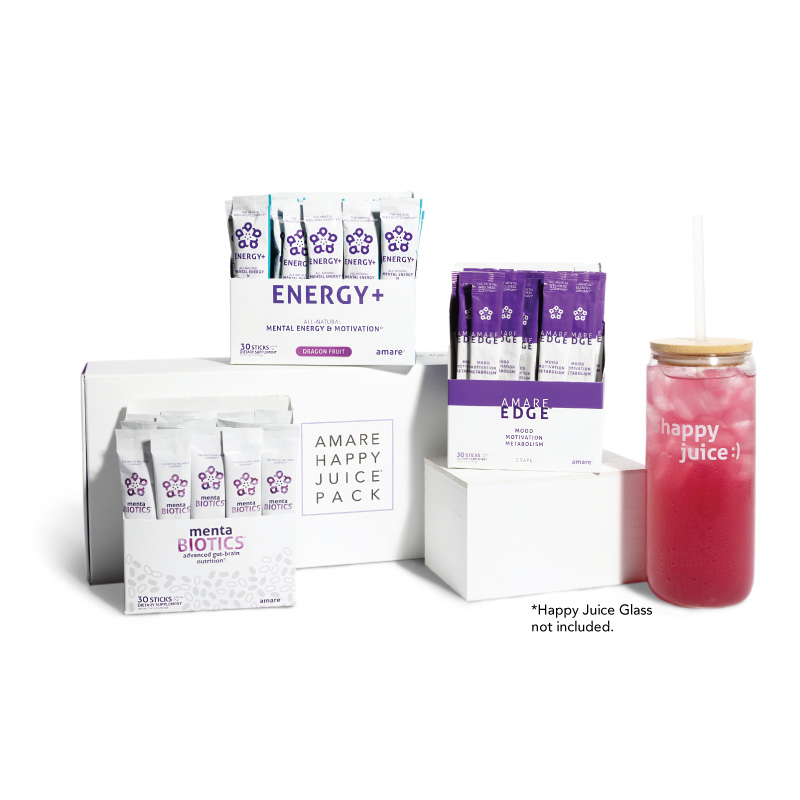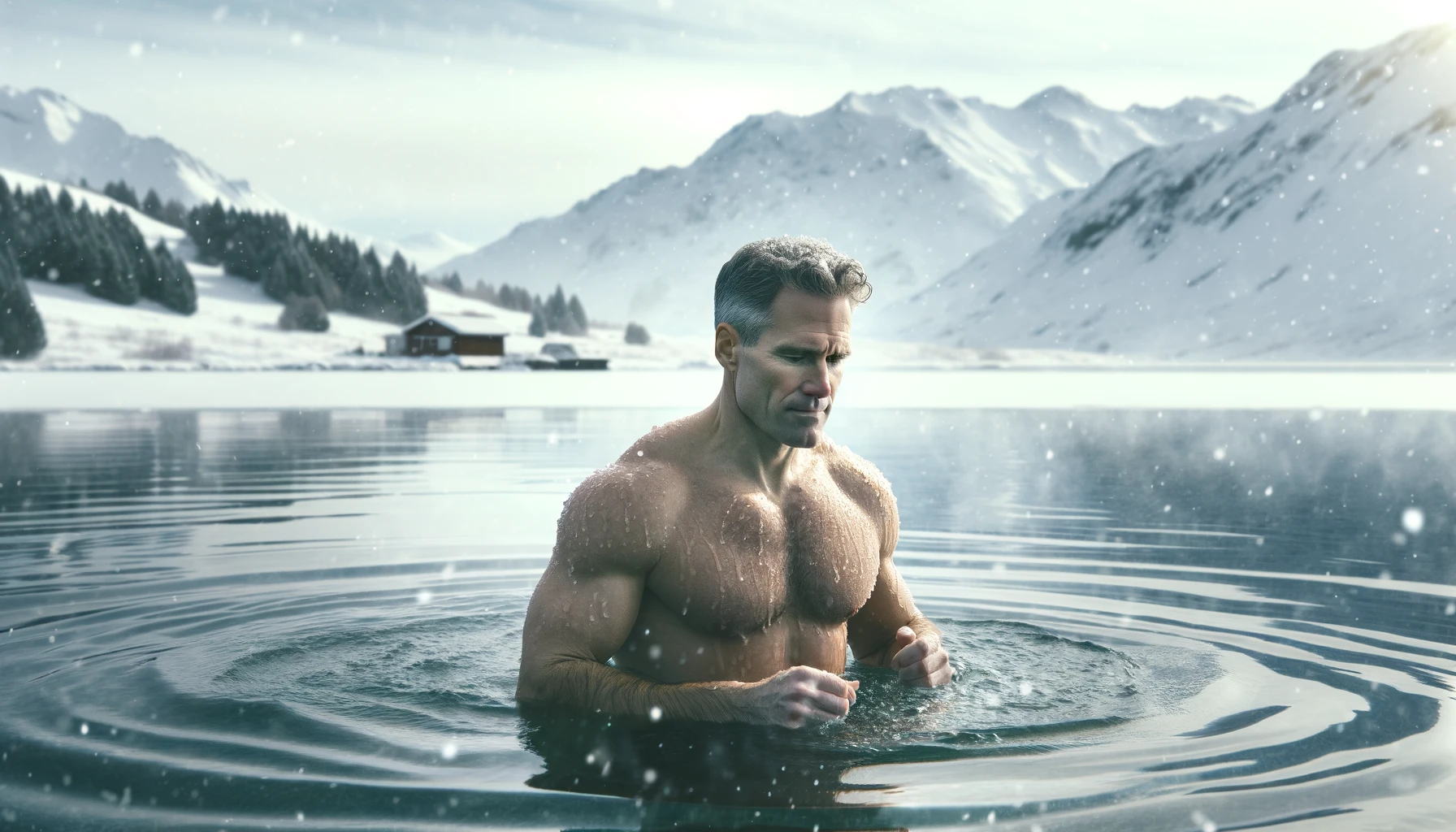Listen on: Apple Podcasts | Spotify
If you’ve ever heard of a cold plunge, cold water immersion, or ice bath, then you’re in the right place. In this guide, we will explore the ideal cold plunge time and temp for cold plunging, as well as the benefits, preparation, and ideal cold water immersion routines.
Whether you’re an athlete, fitness enthusiast, or simply someone looking to improve your overall health and well-being, this guide will provide you with all the information you need to make the most of your cold plunging experience.
Key Takeaways
- What is Cold Plunging? Submerging the body in cold water, typically between 50-60°F (10-15°C), to stimulate various health benefits.
- Benefits of Cold Plunging: Includes reduced muscle soreness, lower inflammation, enhanced immune function, improved mood, and potential metabolic benefits through stimulation of brown fat activity.
- Optimal Conditions for Cold Plunging:
- Duration: Short immersions of 1 to 5 minutes can benefit recovery and the immune system, with potential for longer sessions of up to 10-15 minutes for acclimation and metabolic enhancement.
- Temperature: The sweet spot lies between 10°C to 15°C (50°F to 59°F) for balancing therapeutic benefits and comfort, though some may explore below 10°C for increased mental toughness and metabolic stimulation, with caution.
- Frequency: Post-exercise recovery may entail immersions ranging from 3 times a week to after every intense session, while a general health and wellness routine might involve 3-4 sessions per week.

Feel Better Fast. Guaranteed.
Energy+, EDGE, and MentaBiotics make up the Happy Juice supplement stack, with ingredients clinically proven to:
- decrease anxiousness scores by 55%
- decrease irritability scores by 60%
- decrease fatigue by 64%
- decrease anger 54%
- decrease tension by 45%
- decrease confusion by 43%
- decrease overall distress by 49%
- increase good bacteria by 70%
- decrease negative mood by 105%
- increase positive mood by 211%
What is a “Cold Plunge?”
A cold plunge, also known as cold water immersion (CWI) or ice bathing, involves submerging the body in cold water, typically at temperatures ranging from 50-60°F (10-15°C).
This practice has gained popularity for its potential health benefits, including improved recovery from physical exertion, enhanced mood, and increased alertness. Cold water immersion can be performed in natural bodies of water, specially designed cold plunge pools, or even at home using a bathtub filled with cold water and ice.
Why is a cold plunge beneficial?
Cold water immersion challenges the body’s organ systems, requiring adjustments to maintain core temperature. This includes mechanisms like peripheral vasoconstriction, where blood vessels in the extremities constrict to preserve core temperature, and metabolic adjustments to generate heat.
Regular exposure to cold water has been associated with acclimatization effects, such as reduced heat loss and increased resting metabolism in populations habituated to cold water exposure, like the Ama divers of Japan.1
What are the benefits of cold water immersion?
Cold plunging offers numerous health benefits, though the practice isn’t for everyone. The following are the most common and scientifically supported.
- Improved Recovery and Reduced Muscle Soreness: Research shows that CWI can significantly reduce muscle soreness after exercise. A systematic review and meta-analysis found that cold water immersion effectively reduces delayed onset muscle soreness (DOMS) after exercise.2 This is believed to be due to the cold’s effect on reducing inflammation and slowing down the metabolic processes associated with muscle damage. However, research also shows that cold water immersion may compromise muscle growth, so strength athletes or those looking to build muscle may be better off utilizing other recovery tools.3
- Reduced Inflammation and Enhanced Immune System Function: Cold exposure has been linked to reduced inflammation and improved immune response. A study demonstrated that regular cold water immersions increased white blood cell count and other immune system markers, suggesting an enhanced immune response.4
- Improved Mood and Mental Well-being: Engaging in cold water immersion can also have positive effects on mental health. It’s been reported to release endorphins, the body’s natural painkillers, which can lead to improved mood and a sense of well-being. A study highlighted the potential of cold water immersion in treating depression symptoms, showing a significant mood boost among participants.5
- Increased Metabolic Rate: Cold exposure through CWI has been suggested to stimulate brown fat activity, which plays a role in thermogenesis and fat burning. This could potentially aid in weight management and improve metabolic health.6
Read also: 7 Incredible Health Benefits Of The Sauna.
Cold Plunge Time, Temp, and Frequency
The recommended duration and frequency of cold plunges, or cold water immersion (CWI), can vary based on the individual’s goals, tolerance, and physical condition. Scientific studies have investigated various protocols, offering insights into effective practices for recovery, performance enhancement, and health benefits. Here are some guidelines based on scientific literature:
Time
- Short-duration CWI: Research suggests that even short immersions of around 1 to 5 minutes in cold water (10°C to 15°C) can be beneficial for recovery and the immune system without causing excessive stress.7 Beginners should err on the side of shorter immersions and work up to longer ones.
- Longer-duration CWI: For acclimation to cold and to get metabolic benefits like increased brown fat activity, durations can extend up to 10-15 minutes. However, these longer durations should be approached with caution and gradually increased as one’s tolerance improves.
Temperature
- 10°C to 15°C (50°F to 59°F): This temperature range is commonly recommended for CWI, especially in the context of recovery from physical exertion. Studies have shown that immersing in water within this range can effectively reduce muscle soreness and inflammation post-exercise.8 This temperature range strikes a balance between providing the therapeutic benefits of cold exposure without inducing excessive thermal stress on the body.
- Below 10°C (50°F): Some research suggests that temperatures lower than 10°C might be used for short durations to enhance mental toughness, increase alertness, and potentially stimulate the production of brown adipose tissue, contributing to improved metabolic activity.9 However, colder temperatures are associated with higher risks, such as hypothermia and cardiovascular strain, especially for individuals not acclimatized to cold exposure.
Frequency
- Post-exercise recovery: For athletes or individuals using CWI for recovery purposes, immersions immediately after training or physical activity, ranging from 3 times a week to after every intense training session, have been reported.10 However, as mentioned above, cold plunging may reduce hypertrophy gains, so if you’re interested in building muscle or you’re a strength athlete, CWI may not be the best recovery tool.
- Health and wellness routines: For general health and wellness, including mental health benefits and immune system enhancement, a frequency of 3-4 times per week is often cited. This allows for adaptation to the cold and the realization of health benefits without overexposure.
Considerations
- Individual Variation: It’s important to note that individual responses to CWI can vary widely based on factors like body composition, age, and existing health conditions. What works for one person may not be suitable for another.
- Gradual Adaptation: If you’re new to cold plunging, the ideal time and temp is to start with shorter, warmer cold plunges. For example, start with one minute at 60° F, then, each week, either increase your time or decrease the temperature.
- Consultation with Health Professionals: Before starting a CWI regimen, particularly for longer durations or higher frequencies, consulting with a healthcare professional is advisable, especially for individuals with cardiovascular conditions or other health concerns.
In conclusion, while there’s no one-size-fits-all recommendation for the ideal cold plunge time and temp, starting with shorter, more frequent sessions and adjusting based on personal goals and responses appears to be effective. Engaging in CWI as part of a balanced wellness routine, with attention to safety and personal health status, can maximize the benefits while minimizing risks.
How to Prepare for a Cold Plunge
Now that you understand the benefits of cold plunging, let’s discuss how to properly prepare for a cold water immersion session. One of the key factors to consider is your cold tolerance, as everyone’s tolerance to cold temperatures varies.
Before your cold plunge, it’s recommended to take a warm shower to raise your body temperature slightly. This can help your body adjust to the cold water more comfortably. Additionally, proper mental and physical preparation, such as focusing on your breathing and warming up your body, can enhance your overall cold plunging experience.
Warm Up Exercises
Engaging in warm-up exercises before a cold plunge session is essential to prepare your body for the temperature shock of the cold water. By increasing your body temperature through physical activity, you can minimize the initial shock and promote blood flow, which aids in the overall cold plunging experience.
Some warm-up exercises you can incorporate before your cold plunge include stretching, mobility exercises, and dynamic movements. These exercises help elevate your core body temperature, making the transition into the cold water more tolerable. Gradually increasing the intensity of your warm-up can further aid in heat production and preparation for the cold plunge.
Remember, proper warm-up exercises are crucial to ensure your body is adequately prepared for the cold immersion, allowing you to maximize the benefits of your cold plunging session.
Deep Breathing Techniques
Deep breathing techniques can play a significant role in preparing your body and mind for a cold plunge. Deep, slow breathing before and during your CWI session helps calm your nervous system, reducing the initial shock and promoting mental resilience.
By practicing deep breathing, you can activate your body’s relaxation response, allowing you to better manage the cold immersion experience. Controlled breathing also helps regulate your heart rate and blood pressure, aiding in overall mental and physical well-being during cold plunging.
Incorporating deep breathing techniques into your cold plunge routine can enhance your overall experience, making the cold exposure more manageable and enjoyable.
Increasing Cold Tolerance
If you’re looking to push your cold tolerance and explore colder temperatures during your cold plunging sessions, gradual progression is the key. By gradually exposing your body to colder temperatures over time, you can build your cold tolerance and experience the benefits of extended cold immersion.
Consistent cold exposure, such as regular cold plunging sessions, can help your body adapt to colder temperatures, allowing you to tolerate and enjoy longer sessions. It’s important to note that the rate of progression varies for each individual, so it’s essential to listen to your body and progress at a pace that feels comfortable for you.
By gradually increasing the length of time and decreasing the temperature of your cold plunging sessions, you can optimize the benefits of cold exposure and continue to challenge your cold tolerance.
Optimizing Your Cold Plunge Routine
Now that you’re familiar with the temperature and duration aspects of cold plunging, it’s time to optimize your cold plunge routine. It’s important to tailor your CWI therapy to your personal needs, goals, and overall health. By doing so, you can maximize the benefits of cold plunging.
Incorporating Whole Body Movement
One way to optimize your cold plunge routine is through the incorporation of whole body movement. Engaging in light physical activity during your cold plunge session, such as gentle stretching or slow, controlled movements, can help maintain blood flow and energy levels. This not only promotes overall well-being but also aids in muscle recovery and enhances the benefits of cold exposure.
Gradual Progression
To continue optimizing your CWI routine, gradual progression is key. Gradually increasing the length of time and decreasing temperature of your cold plunging sessions allows your body to adapt and further develop cold tolerance. This gradual progression ensures a safe and effective cold plunge experience, where your body can reap the maximum benefits of cold exposure.
Hydration Tips
Proper hydration is essential before and after your cold plunge sessions. Ensuring you’re adequately hydrated can help your body adjust to the cold temperatures and maintain overall health. Hydration plays a crucial role in temperature regulation during cold water immersion, helping your body maintain its core temperature. Proper hydration also aids in muscle recovery and overall well-being, making it an important factor to consider in your cold plunge routine.
Who Can Benefit from Cold Plunging?
Now, let’s discuss the wide range of individuals who can benefit from cold plunging. The numerous benefits of cold exposure make cold plunging ideal for anyone looking to improve their overall health and well-being. From athletes and fitness enthusiasts to high-stress individuals and those seeking longevity, cold plunging offers something for everyone.
Athletes and Fitness Enthusiasts
Athletes and fitness enthusiasts can particularly benefit from cold plunging.
Cold water immersion aids in muscle recovery, reducing muscle soreness and inflammation caused by intense physical activity. Regular cold plunging sessions can enhance exercise recovery, allowing athletes and fitness enthusiasts to optimize their overall performance.
The cold exposure experienced through plunging promotes blood flow, assisting in muscle recovery and reducing the risk of injury.
High-Stress Men and Women
For high-stress individuals, cold plunging can provide a natural remedy to reduce stress levels and promote mental resilience.
The cold water immersion helps relieve stress and triggers the body’s relaxation response, leading to improved mental well-being.
Regular cold plunging sessions allow high-stress individuals to manage their overall health and well-being, as the therapy improves energy levels and offers a temporary respite from the demands of daily life.
Health and Longevity Seekers
Those seeking health and longevity can also benefit from cold plunging. Regular cold plunging improves circulation, aiding in the overall health of the body.
The therapy can assist muscle recovery, reduce muscle soreness, and contribute to weight loss. Cold exposure promotes the removal of waste products from the body, optimizing overall health and enhancing the body’s natural healing processes.
By incorporating cold plunging into your routine, you can improve your overall health, vitality, and potentially increase your longevity.
Choosing the Right Cold Plunge Tub
When it comes to cold plunging, choosing the right cold plunge tub is essential for an optimal experience. There are various options available, including plunge tubs, cold tubs, and even ice barrels, each offering different benefits and features.
Points to Consider
When choosing a cold plunge tub, there are several points to consider:
- Size: Ensure the tub is large enough to provide ample immersion while accommodating your body comfortably.
- Material: Look for a tub made of durable, high-quality materials that can withstand temperature fluctuations and regular use of cold plunging.
- Durability: A cold plunge tub should be able to withstand regular cold water immersion sessions without compromising its integrity.
- Temperature of the water: The tub should be capable of maintaining the desired temperature range for your cold plunging sessions, providing the ideal environment for your needs.
Consider these factors when selecting a cold plunge tub to ensure the best cold plunging experience.
Was this helpful? If so, please share it. And remember to subscribe to the Nikkola Newsletter.
- Esperland, D., de Weerd, L., & Mercer, J. B. (2022). Health effects of voluntary exposure to cold water – a continuing subject of debate. International journal of circumpolar health, 81(1), 2111789. https://doi.org/10.1080/22423982.2022.2111789 ↩︎
- Bleakley, C., McDonough, S., Gardner, E., Baxter, G. D., Hopkins, J. T., & Davison, G. W. (2012). Cold-water immersion (cryotherapy) for preventing and treating muscle soreness after exercise. The Cochrane database of systematic reviews, 2012(2), CD008262. https://doi.org/10.1002/14651858.CD008262.pub2 ↩︎
- Roberts, L. A., Raastad, T., Markworth, J. F., Figueiredo, V. C., Egner, I. M., Shield, A., Cameron-Smith, D., Coombes, J. S., & Peake, J. M. (2015). Post-exercise cold water immersion attenuates acute anabolic signalling and long-term adaptations in muscle to strength training. The Journal of physiology, 593(18), 4285–4301. https://doi.org/10.1113/JP270570 ↩︎
- Brenner, I. K., Castellani, J. W., Gabaree, C., Young, A. J., Zamecnik, J., Shephard, R. J., & Shek, P. N. (1999). Immune changes in humans during cold exposure: effects of prior heating and exercise. Journal of applied physiology (Bethesda, Md. : 1985), 87(2), 699–710. https://doi.org/10.1152/jappl.1999.87.2.699 ↩︎
- Shevchuk N. A. (2008). Adapted cold shower as a potential treatment for depression. Medical hypotheses, 70(5), 995–1001. https://doi.org/10.1016/j.mehy.2007.04.052 ↩︎
- van der Lans, A. A., Hoeks, J., Brans, B., Vijgen, G. H., Visser, M. G., Vosselman, M. J., Hansen, J., Jörgensen, J. A., Wu, J., Mottaghy, F. M., Schrauwen, P., & van Marken Lichtenbelt, W. D. (2013). Cold acclimation recruits human brown fat and increases nonshivering thermogenesis. The Journal of clinical investigation, 123(8), 3395–3403. https://doi.org/10.1172/JCI68993 ↩︎
- Machado, A. F., Ferreira, P. H., Micheletti, J. K., de Almeida, A. C., Lemes, I. R., Vanderlei, F. M., Netto Junior, J., Pastre, C. M. (2016). Can water temperature and immersion time influence the effect of cold water immersion on muscle soreness? A systematic review and meta-analysis. Sports Medicine, 46(4), 503-514 ↩︎
- Bleakley, C., & Davison, G. (2010). What is the biochemical and physiological rationale for using cold-water immersion in sports recovery? A systematic review. British Journal of Sports Medicine, 44(3), 179-187 ↩︎
- Yamazaki, F., & Sone, R. (2010). Different effects of cold water immersion and ice pack application on cardiovascular autonomic responses. Autonomic Neuroscience: Basic and Clinical, 156(1-2), 111-114 ↩︎
- Versey, N. G., Halson, S. L., Dawson, B. T. (2013). Water immersion recovery for athletes: Effect on exercise performance and practical recommendations. Sports Medicine, 43(11), 1101-1130 ↩︎



